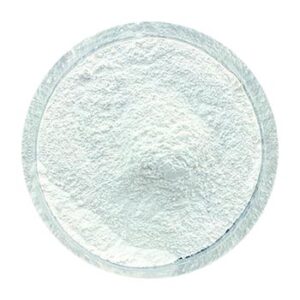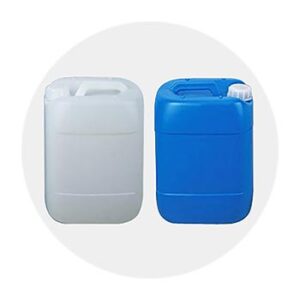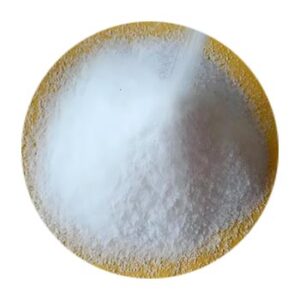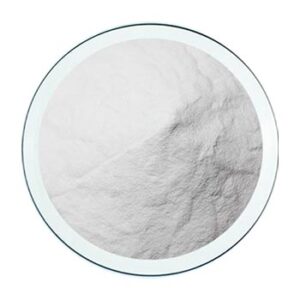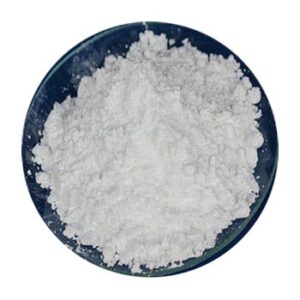Molecular formula: C9F17OC6H4SO3Na
Molecular weight: 626
Appearance: white or light yellow solid powder
Ionic: anionic
Acidity and alkalinity (1.0% aqueous solution): neutral.
Melting point (℃): 250-260
Critical micelle concentration (c.m.c) w%: 0.07.
Critical surface tension (dyne/cm): 19.5
Stability:
H2SO4 (50%) is stable at 80℃
NaOH (30%) at 80℃ is stable.
80℃HCL(37%): stable.
HNO3 (25%) at 80℃: stable.
Application:
1. Efficient Fluoroprotein Foam Fire Extinguishing Agent
Adding OBS-isopropanol-water solution (the ratio is about 4:3:3) into the protein foam liquid to prepare a high-efficiency fluorine protein foam fire extinguishing agent (containing about 0.015W% of OBS), and at the same time, hydrocarbon surfactants such as sodium alkylbenzene sulfonate, sodium alkylnaphthalene sulfonate and sodium fatty alcohol sulfate can be selected to be matched with it. Due to the excellent surface properties of fluorine surfactant, it can quickly form a stable foam and spread it on the oil surface, and the fire extinguishing speed is 3~4 times that of ordinary protein fire extinguishing agent. It is suitable for underwater spraying fire extinguishing devices such as oil depots and oil tanks (and can also be used for ordinary protein foam fire fighting equipment). The fire extinguishing test of 100M3 oil tank shows that when the supply intensity of extinguishing agent is controlled at 9-10L /m2· In time sharing, the fire extinguishing time of the oil tank is less than 3 minutes. OBS can also be combined with dry powder fire extinguishing agent, which has good fire extinguishing effect and is very suitable for extinguishing fires caused by oil, and has become a safe production place in oil fields, oil depots, fuel depots in transportation departments (such as gas stations), chemical plants and so on. In addition, after adding OBS to the common anti-solvent foam extinguishing agent, the fluoroprotein anti-solvent foam extinguishing agent can significantly improve the liquid resistance and heat resistance of the foam, which is very suitable for extinguishing fires of water-soluble liquids such as alcohols and ketones.
2. Oil exploitation
OBS is used in secondary and tertiary oil recovery in petroleum exploitation, and it is a main raw material for producing drainage AIDS. It can reduce the surface tension of fracturing fluid or the interfacial tension between oil and water, and has the advantages of dissolving wax and reducing viscosity, and efficiently foaming drainage AIDS. Because of its higher surface activity, OBS can significantly reduce the oil-water interfacial tension between crude oil and oil displacement system, so that crude oil can be separated from rock strata and oil sands and pumped to the ground together with the oil recovery and drainage aid system, thus improving the efficiency and output of oil recovery. Moreover, OBS and common hydrocarbon surfactants can be used well in combination, which can reduce costs and improve benefits. The general dosage is about 0.3%.
3, steel plate cleaning
Adding a proper amount of OBS into the water-based cleaning agent for cleaning steel plates can obviously enhance the decontamination ability and improve the actual work efficiency, and at the same time, it is not easy to be corroded and rusted by residual water.
4. Photosensitive film
As an antistatic agent, it is mixed in some solutions and coated on the film base, which solves the possibility of electrostatic sparks caused by the high-speed rotation friction of the film base in the film production process and ensures the product quality in the film production process. At the same time, it can significantly enhance the dispersion speed and dispersion effect of other components on the film base. The use of OBS can reduce harmful impurities in the photosensitive rubber sheet, reduce the leveling agent dosage of the photosensitive latex to 1/40 of the original dosage, and achieve better leveling effect.
5. Printing
When printing and writing on plastic film and smooth paper with treated surface, ordinary ink often encounters color loss, broken line, difficulty in coloring or poor ink adhesion, and the coating liquid appears fish scale phenomenon. After adding a proper amount of OBS (generally 0.01%-0.1%), it can significantly improve the leveling, auxiliary development and lubricity of ink, reduce the surface tension of ink, improve its adhesion and help it form well. For example, the addition of GG transparent yellow pigment (about 0.067 w%) to OBS significantly improves the wettability of pigment to oil, softens pigment particles, greatly improves the ink rolling performance, and solves the problem of roller biting that cannot be solved when using TX-10 emulsifier.
6. Other uses
Papermaking: in paraffin wax — — Rosin — — Adding OBS fluorine-containing surfactant into water system can easily prepare paraffin wax with high quality and good stability — — Rosin — — Water dispersion.
Electroplating: keeping the surface of the coated part clean is a prerequisite for obtaining high-quality electroplated layer, especially cyanide-free electroplating of copper products. Adding about 0.3%OBS to the washing solution of the plated product can obtain satisfactory washing effect and significantly reduce the volatilization of chromium mist.
Impregnation and coating: Adding OBS (as dispersant) into the concentrated dispersion of PTFE or fluoroplastic FEP(F46) can make the dispersion obtain better wetting performance, thus making various satisfactory impregnated glass fiber products and smooth metal surface coatings.
